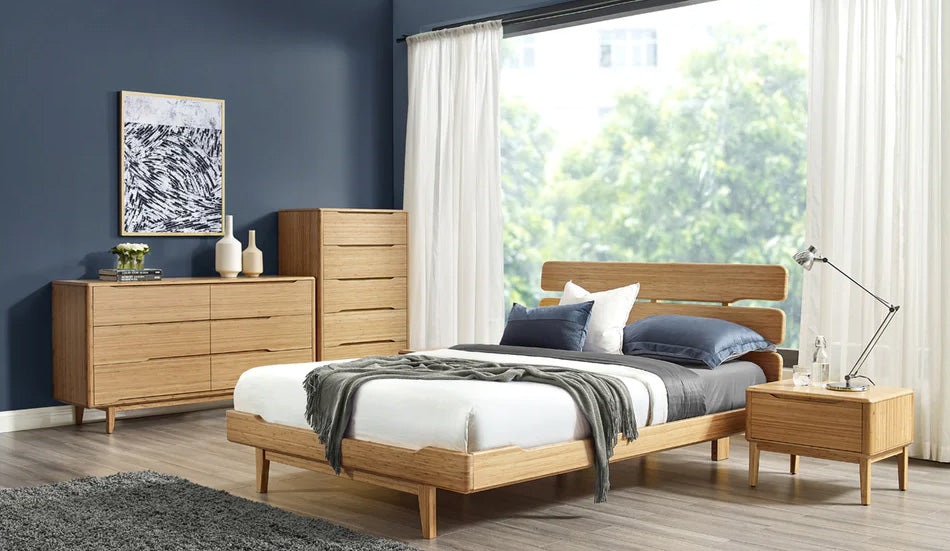Interior design and furniture styles offer a captivating array of aesthetics, each with its unique blend of elements, history, and philosophy. In this blog post, we'll delve into seven distinct design styles: Zen Modern, Mid-Century Modern, Modern, Minimalist, Rustic, Contemporary, and Scandinavian. Let's explore the characteristics, differences, and inspirations that define each style.
- Zen Modern Design: Zen Modern Design harmoniously marries the tranquility of Zen philosophy with the sleekness of modern aesthetics. Inspired by Eastern influences, this style emphasizes simplicity, functionality, and a connection to nature. With a focus on mindfulness and well-being, Zen Modern interiors exude a sense of serenity through natural materials, minimalistic decor, and an emphasis on open space.
- Mid-Century Modern Design: Mid-Century Modern Design is a testament to the post-war optimism of the mid-20th century. Characterized by clean lines, organic forms, and innovative materials, this style marries functionality with elegance. Iconic furniture pieces, such as the Eames Lounge Chair, epitomize its timeless appeal. Mid-Century Modern spaces exude a sense of nostalgia, balancing innovation with classic design elements.
- Modern Design: Modern Design, born from the 20th-century Bauhaus movement, is a reflection of its time's progress and innovation. With an emphasis on clean lines, minimalist decor, and a blend of materials, modern interiors exude a contemporary aesthetic. Functionality takes center stage, as spaces prioritize practicality and create a seamless connection between form and function.
- Minimalist Design: Minimalist Design champions the philosophy of "less is more." Stripping away excess ornamentation, this style embraces clean lines, neutral color palettes, and a focus on essential elements. Minimalist interiors create a serene ambiance, inviting mindfulness and contemplation. Spaces are uncluttered, allowing occupants to appreciate the beauty of simplicity.
- Rustic Design: Rustic Design embraces the authenticity of rural living with its emphasis on natural materials, handcrafted details, and a connection to the outdoors. With weathered textures, earthy tones, and a sense of comfort, rustic interiors evoke a warm and inviting atmosphere. Antique pieces and vintage finds add character, creating spaces that exude a sense of history and nostalgia.
- Contemporary Design: Contemporary Design captures the ever-evolving spirit of the present. Fluid and dynamic, this style incorporates a mix of influences, creating interiors that are current and reflective of the times. Contemporary spaces often feature sleek lines, a neutral palette with vibrant accents, and a blend of materials. The focus is on individuality and adaptability, resulting in spaces that resonate with a diverse range of design sensibilities.
- Scandinavian Design: Scandinavian Design hails from the Nordic region and embodies the principles of simplicity, functionality, and a strong connection to nature. With its light color palettes, natural materials, and clean lines, Scandinavian interiors create an atmosphere of warmth and comfort. The design's emphasis on open space, cozy textiles, and efficient layouts reflects the region's lifestyle and values.
Comparative Overview:
- Zen Modern emphasizes mindfulness and well-being, fusing Eastern influences with modern aesthetics.
- Mid-Century Modern marries innovation with organic forms, capturing the optimism of the mid-20th century.
- Modern Design prioritizes functionality and clean lines, reflecting contemporary sensibilities.
- Minimalist Design celebrates simplicity and mindfulness, creating serene and uncluttered spaces.
- Rustic Design embraces natural materials, handcrafted details, and a warm, nostalgic ambiance.
- Contemporary Design evolves with the times, blending diverse influences for current and adaptable interiors.
- Scandinavian Design exudes comfort and functionality, with a strong connection to nature and a light, airy aesthetic.
In conclusion, these seven interior design styles offer distinct interpretations of aesthetics, functionality, and cultural influences. Whether you resonate with the timeless elegance of Mid-Century Modern or the serenity of Zen Modern, each style provides a unique lens through which to create spaces that align with your personal preferences and values.

